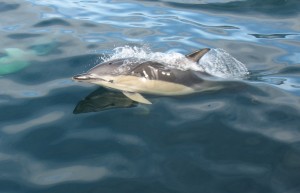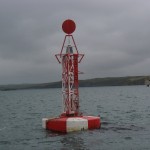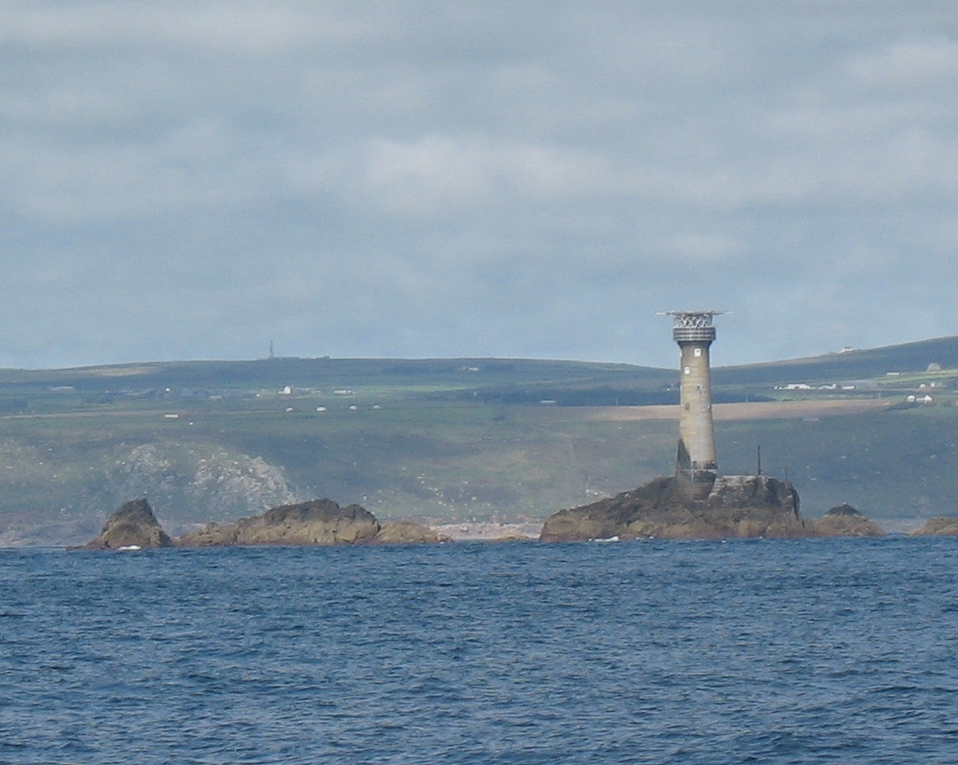
Summary: Falmouth to Neyland Marina in Milford Haven. 172.3 miles in 25 hours. Wind from more or less ahead nearly all the way, so a quite a bit of motorsailing, but managed to sail around half the passage. Weather – generally grey and murky with Wind mainly from NW/W 4-5.
After waiting for days for a reasonable forecast in Falmouth, we finally got a window of sorts, though with less than ideal winds forecast to be from the N/NW – just where we wanted to go. So, we set off around 10am Monday to try and catch the tide first at the Lizard and then the north going stream at Lands End. Motorsailed most of the way to Lands End and finally – past the Longships lighthouse and we are heading north. The wind then kicked in reasonably from the NW and occasionally west and we managed to sail through most of the night, though we took in one reef and went down to 2/3 jib for the night as the wind gusted 5 occasionally. Then, sods law, about 3 hours out from Milford Haven with the east going stream just beginning, the wind headed us completely and we had to motorsail the last part into murky grey and wet weather with the wind more or less right on the nose. Not a classic passage, but functional.
One of the highlights of the trip though was the wildlife. Just after the Longships we were joined by a pod of 20 or more dolphins. They played around the boat and the bow wave for 45 minutes or so before heading off, though we caught occasional glimpses of them. At first light in the Bristol Channel we were joined again by one or more pods and every so often for the rest of the morning they would return to play around the boat. The sight of them certainly lifted the grey mood from the weather for the latter part of the trip. As we approached Milford Haven we started seeing Puffins as well – bizarre little birds, but very engaging, particularly as they flapped their wings frantically to take off.
The dolphins were common bottlenose dolphins (Tursiops Truncatus) and they are common around this coast. Their main diet is eels, squid, shrimp and various other fishes and they just swallow them whole – no chewing their food to make it last longer! Pods are typically around 15 in number, but they will sometimes group together for short periods in larger groups. They will often cooperate to feed, herding fish together to feed as a group, but they also feed individually. The weight varies, but when adults they will be around 150-200kg in weight with males being larger than females. The name – bottlenose – apparently derives from the fact that their snout resembles an old-fashioned gin bottle in appearance. The dolphins have their own distinctive whistle used to communicate information on their identity, location, and condition to other dolphins. These sounds could be clearly heard as they played around the bow wave. They kept returning to us through much of the passage across the Bristol Channel whether the engine was running or not.

Milford Haven is a great natural harbour and as a result a busy port. In fact it is the third largest in the UK. In the offing we came past large numbers of tankers anchored waiting to come in. A significant number of these now are gas carriers bringing Liquified Natural Gas (LNG) from Qatar. The gas is brought in on tankers and unloaded at two terminals. It is then pumped through the National Grid’s South Wales pipeline to the national distribution centre in Gloucestershire. This route will shortly provide up to 25% of the UK’s gas requirements under a deal with Qatar. So important is this deal that the red and white safe water mark in the channel is even called ‘Qatar‘ – an unusual name for a buoy!
We carried on through the harbour to Neyland Marina – a Traneurope marina. It is a lovely spot and very sheltered. The marina itself is a redevelopment of the old railway yard. Neyland was chosen in 1856 as the western terminus for Brunel’s Great Western Railway along with a transatlantic terminal to serve the ships. The town then grew up to serve the railway and port, though in the early 20th century many people moved from Neyland to Goodwick and Fishguard which were becoming more prominent. This was prompted in 1906 when the valuable Irish traffic was moved from Neyland to Fishguard and the town never fully recovered its original status.
See the Milford Haven picture gallery for more photos of the dolphin pod(s) we saw and Milford Haven.

